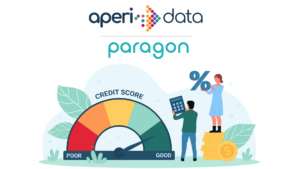The financial industry has undergone a transformative change with the introduction of Open Banking in the UK, revolutionising how we assess an individual’s likelihood of repayment and Affordability. AperiData, has been at the forefront of this groundbreaking technology since its inception by recognising the potential for providing businesses with valuable insights and real-time financial data. In this article, I want to discuss how Aperidata, has risen to the seemly difficult challenge of classifying millions of bank transactions in real time.
Understanding Open Banking and It’s Challenges
At its core, Open Banking in the UK involves providing third-party providers access to consumer banking, transactions, and other financial data from financial institutions. The aim is to spur innovation, offer more choices to consumers, and drive competition. However, a pressing issue emerges with the influx of transaction data: How can we classify these transactions into different categories accurately?
Traditional rule-based systems have been the mainstay for parsing these transactions. However, as we delve deeper, their significant limitations become evident.
The Shortcomings of Rule-Based Systems
Historically, many companies, including AperiData, initially gravitated towards rule-based systems for transaction classification. At first glance, these systems seem promising, delivering satisfactory results. However, they’re not without flaws. These systems:
- Lack of Adaptability: Rule-based systems can’t learn from new data, making them ill-suited for the dynamic nature of open banking transactions.
- Brittle: They break easily when confronted with unexpected inputs.
- Need Constant Manual Upkeep: As merchants and providers often change their description formats, the parsing rules must be frequently updated.
- Don’t Scale Well: As the number of rules grows, maintaining them becomes cumbersome, and the system’s efficiency drops.
Despite these challenges, some companies boast near-perfect accuracy rates for their rule-based engines. However, that’s like acing a test when you’ve already had a sneak peek at the answers! This perceived precision only holds true for previously seen transactions, which change all the time. The effort and resources needed to maintain such a system can also spiral out of control.
What about merchant codes? While merchant codes have been efficient for transaction identification, their availability in Open Banking is limited, especially with specific account types.
Embracing Machine Learning
Machine Learning (ML) algorithms can sift through vast amounts of transaction data, identifying patterns and making categorisation decisions with increasing accuracy over time. Initially, the allure of ML lay in its potential to overcome the limitations inherent in rule-based systems, promising a more adaptive and scalable solution to the transaction classification problem.
However, solely relying on ML presents its own set of challenges. The effectiveness of ML models is heavily contingent on the quality and volume of training data.
This is where a new innovative solution is needed, seamlessly blending rule-based systems with machine learning to deliver real accuracy and offer invaluable insights.
Enter The Hybrid Solution
Recognising the limitations of traditional systems, AperiData developed a hybrid solution that synergises the strengths of rule-based systems and machine learning.
Harnessing Machine Learning: AperiData employs a supervised machine-learning model trained on millions of Open Banking transactions. Developers post raw transaction narratives and their the API categorises them, providing categories, scores, divisions, and valuable metadata.
Advanced Machine Learning Approach
Beyond the traditional methods, AperiData’s core strength lies in its machine learning-based approach to transaction categorisation. Here’s how the system stands out:
- Adaptive Learning: At the heart of AperidData’s API is a machine-learning model that continually refines its understanding. It learns from datasets, it’s users and sophisticated text-processing algorithms. Over time, the model’s accuracy intensifies, adapting to a changing transaction landscape even if it has never seen the transaction.
- User-Centric Customisation: Recognising that one size doesn’t fit all, AperiData feedback API allows for user preferences to be considered. If a transaction is miscategorised according to a customer’s perspective, they have the liberty to manually recategorise it. The system then learns from this feedback, ensuring that future categorisations align more closely with individual customers preferences.
- Unparalleled Versatility: Unlike rule-based systems, which are confined to predefined rules, AperiData’s machine-learning model boasts an uncanny ability to categorise even unfamiliar transactions. It achieves this by analysing transaction data in conjunction with vast amounts of other data. By determining the probability of a transaction belonging to a specific category based on patterns and relationships in the data, AperiData ensures accurate categorisation even for transactions it encounters for the first time.
Conclusion
In the rapidly evolving landscape of Open Banking, staying ahead requires tools that are not just effective but also adaptive! While rule-based systems have served us in the past, their inherent limitations demand a more dynamic approach. AperiData’s hybrid solution, marrying the predictability of rule-based systems with the agility of machine learning, stands as a beacon of innovation in this realm. Not only does it offer accuracy today, but it’s also poised to evolve with the ever-changing financial world continually.
Written by Glyn Jackson




